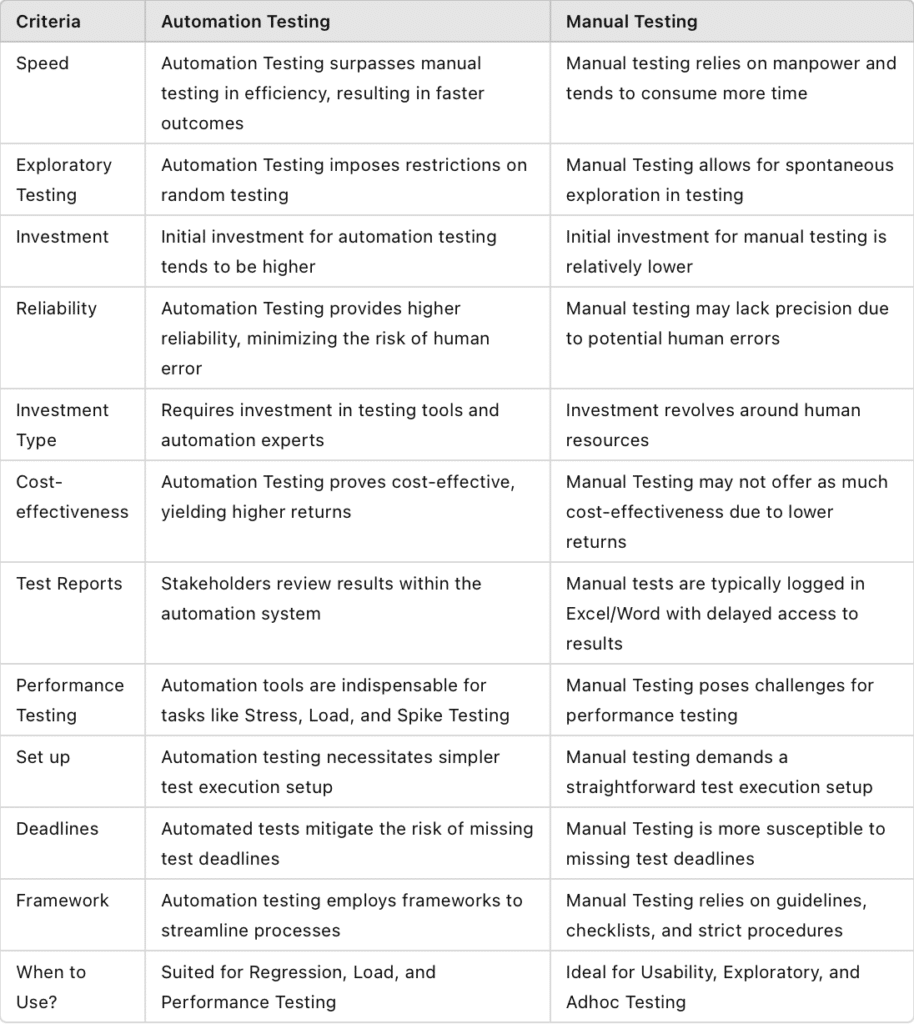
In the dynamic landscape of software testing, the debate between manual testing and automation testing continues to intrigue professionals worldwide. Both methodologies offer distinct advantages and cater to diverse project requirements. Understanding the nuances of each approach is essential in making informed decisions that drive the success of software development endeavors.
1. What Is Manual Testing?
Manual testing involves human testers executing test cases and interacting directly with the software to assess its functionality, usability, and user experience. Unlike automation testing, manual testing requires manual intervention at every step of the testing process, allowing testers to identify defects, inconsistencies, and usability issues through hands-on exploration.
2. How Manual Testing Works
Manual testing operates through human testers executing predefined test cases or exploring software functionalities intuitively. Testers interact directly with the software’s user interface, inputting data, and validating outputs. They follow test scenarios to assess the software’s behavior, functionality, and user experience. Defects and inconsistencies are identified, recorded, and reported manually. Manual testing relies on human judgment, analytical skills, and domain knowledge to uncover defects and ensure software quality.
3. What Is Automation Testing?
Automation testing involves the use of specialized tools and scripts to automate the execution of test cases, data preparation, and results analysis. It aims to improve testing efficiency, reliability, and repeatability by reducing manual intervention and accelerating the testing process. Automation testing is particularly effective for repetitive test scenarios, regression testing, and tasks requiring extensive test coverage.
4. How Automation Testing Works?
Automation testing functions by utilizing specialized tools and scripts to automate the execution of test cases, data preparation, and results analysis. Test scripts are created to simulate user interactions with the software, such as inputting data and validating outputs. These scripts are executed automatically by the testing tool, which compares actual results with expected outcomes. Automated testing is ideal for repetitive test scenarios and regression testing, enabling faster test execution, wider test coverage, and improved reliability.
5. Manual Testing vs. Automation Testing Comparison

6. Which one to choose?
Choose Automation Testing if:
- You need to execute repetitive tests frequently: Automated tests are well-suited for tasks like regression testing, ensuring that existing functionality remains intact after changes. Automated testing proves to be significantly faster and more efficient than manual testing for repetitive tasks.
- You have a large number of tests to cover: Automated testing enables the creation and simultaneous execution of hundreds or even thousands of tests, a feat impossible to achieve manually. Thus, automated testing facilitates faster attainment of broader test coverage.
- Consistency and accuracy are paramount: Automated tests follow predefined scripts consistently, eliminating the possibility of human error and ensuring uniform results.
- Testing resources are limited: Automated testing liberates manual testers, allowing them to focus on more intricate, exploratory testing that demands human judgment.
- You seek prompt feedback: Automated tests can be scheduled to run overnight or on-demand, providing swift feedback on code modifications and regressions.
Choose manual testing if:
- Complex user interactions or edge cases need to be tested: Automated tests struggle with scenarios requiring human intuition and judgment. Manual testing allows for flexible exploration and identification of unforeseen issues.
- Prioritizing usability testing: Manual testers offer valuable insights into user experience, navigation, and intuitiveness, aspects challenging to capture through automation.
- Testing is infrequent or for short-term projects: The setup and maintenance of automated tests can be time-consuming, making them less cost-effective for short-term projects or sporadic testing requirements.
- Greater technical expertise is needed for automation: Implementing and managing automated tests often necessitates programming skills, which may not be readily available within your team.









